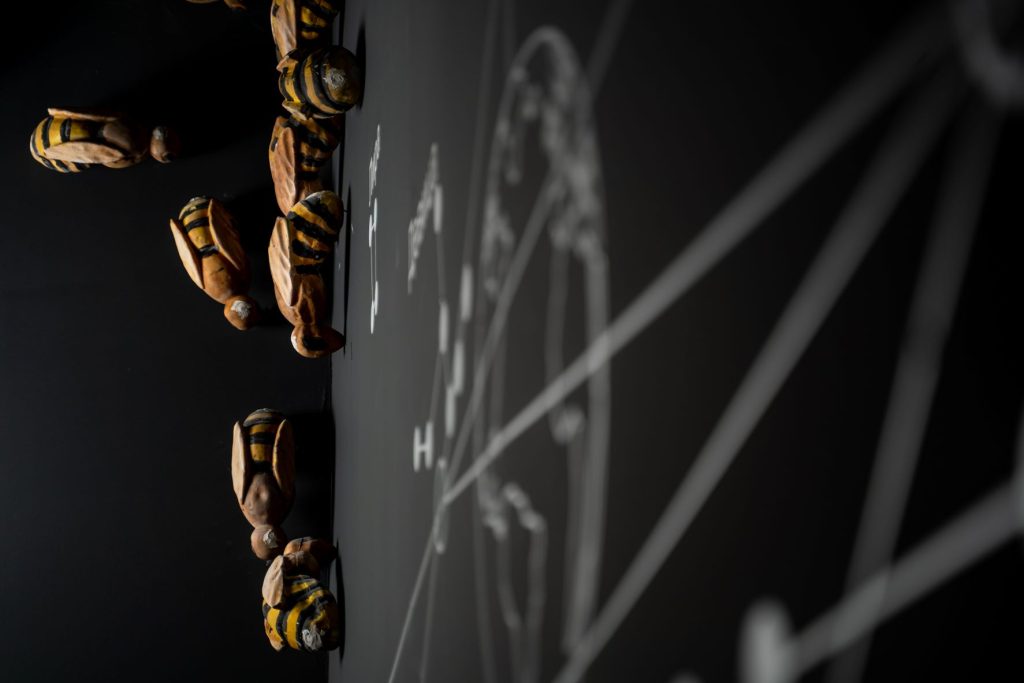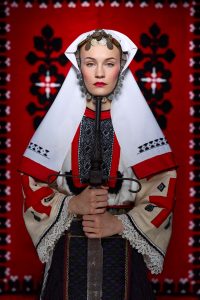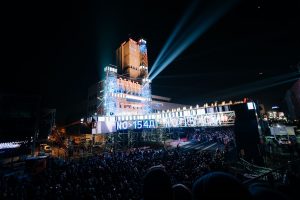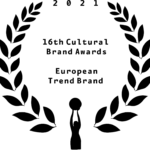The spectacular exhibition entitled ‘Time and Universe’ will take us on a journey from dark to light, chaos to cosmos, all within the framework of a story about a giant of Serbian and world science, Milutin Milanković, through the prism of art.
The exhibition was ceremoniously opened in the hall of Studio M, on 13 January.
The visual-artistic aspect of the production is created by Dr. Dušan Jovović, whose prestigious multimedia and interactive exhibitions have received international attention. The author of the narrative, Professor Aleksandar Petrović, is exceptionally familiar with Milanković’s life and work, which he has studied for over 50 years.

The exhibition will take up the concept of time through the ages, as well as the interrelationship between a person, spirit and science. As the foundation of the exhibition, creators Dušan Jovović and Aleksandar Petrović have chosen the life and work of the celebrated Serbian scientist Milutin Milanković. This towering scientist, academic and professor at the University of Belgrade found success in multiple disciplines: mathematics, meteorology, climatology, astronomy, geology, geophysics, geography and civil engineering. As a scientist, he was preoccupied by the big questions that lie at the foundation of all civilizations: the laws of the sun, the change of the seasons and the confirmation of a reliable calendar. He is the creator of the Revised Julian calendar, known as Meletija’s or the New Julian calendar, and it is the most precise calendar in terms of the tropical year.
The scientist Milanković travelled through “distant worlds and times”; in honour of his contributions to astronomy, one crater on the dark side of the Moon is named “Milanković”, and another crater on Mars also bears his name. His well-known book, Kroz vasionu i vekove (Through Distant Worlds and Times), which many consider among the best-written works of popular science, was published in 1928, in Novi Sad, in the magazine Letopis Matice Srpske (Yearbook of the Matica Srpska), the oldest European periodical still in print today. Milanković’s book has been a guiding idea for this exhibition, as well as the entire concept of Doček.
‘Time and Universe’ is an interactive multimedia exhibition that traces Milanković’s creative scientific obsessions. The exhibition space will be completely structurally and scenographically adapted in order to guide the audience along staircases and tunnels through the displays. The highly attractive exhibition features optical illusions, 3D sounds, animated units and unexpected turns. Virtual human figures in motion are placed throughout the space, and sounds of analogue apparatuses mingle with a digital aural environment, for a sound whose very colour conjures the passage of time…
The exhibition evokes early humanity, the souls of the dead who are ascending the seven or nine steps of Osiris’ throne, along a monumental set of steps of the likes seen in Angkor Wat, Machu Picchu and scores of other temples. Through the Vinča culture we search for a message of the harmony, accord, balance, symphony and connection between heaven and earth. The exhibition concludes with a reconstruction of Milanković’s study, which he describes as follows: ‘My study is but a modest, yet comfortable refuge. There, protected from the double burden of the outside world, I feel indescribably well; here I read, think, dream, sometimes even doze… Should I glimpse the Moon, I climb up to it and walk its surface, examining up close that which interests me on the Moon maps. Should a planet appear, I fly off to test the results of my mathematical investigations on the climate of planets on site’.
In this magical room visitors can see a comparison of all major calendars, with the help of a hologram of one great traveller through time and the cosmos, Milutin Milanković.
The entry to the exhibition ‘Time and Universe’ will be free of charge on 13 January. From 14 January, the tickets will be charged as follows: RSD 300 for a single visit, RSD 200 for group visits (more than five people), and RSD 1000 for family tickets. Entry is free of charge for children under the age of 7.
Photo: Jelena Ivanović







